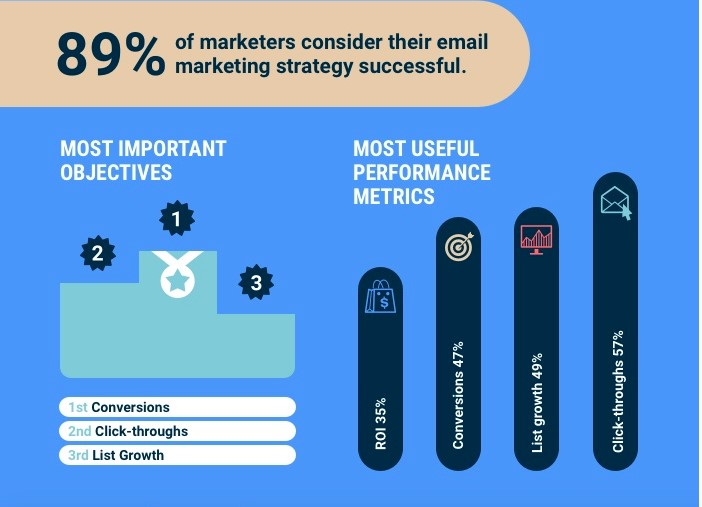This post has been reviewed by our Deliverability Specialist, John Peters.
Before your email can be replied to, starred, or even read, it has to be accepted by the inbox provider’s server (think Gmail, Yahoo, or Hotmail). Then, the email must be successfully filtered to the user’s inbox.
This is what we know as “email deliverability,” and it’s crucial for successful email marketing. However, many people are unsure about this concept and the best practices surrounding it.
What are the best email deliverability practices to follow?
There needs to be a distinction drawn between email delivery and email deliverability. Both matter, yet each is unique in its importance.
We all know what it means when an email is delivered: It is successfully accepted by the recipient’s server. However, deliverability draws the distinction of exactly where that email lands.
Email deliverability involves making sure the email arrives successfully in a person’s inbox rather than their spam folder. This means a marketer could have great delivery rates, but poor deliverability statistics.
How is email deliverability measured?
Email deliverability could be considered a sub-metric of delivery rates. Therefore, to measure the former, one needs to know the latter.
Delivery rates show how many messages are accepted by the recipient’s server. If your email platform lets you know how many of your emails were delivered and how many bounced, you don’t have to worry about making any special calculations.
However, if your email platform doesn’t give you a breakdown of how many emails were delivered and how many bounced, there are other metrics you can use to gauge whether your emails made it to the inbox.
For instance, you can use a platform that shows you how many emails were opened and what links people clicked on.
To determine the open rate for an email campaign, most email service providers (ESPs) divide the unique open rate by the number of emails sent, minus those that bounced.

A unique open rate is one “open” recorded for each individual recipient who opens the email campaign, even if they opened the email multiple times.
Similarly, an ESP can measure delivery rates by subtracting the bounced emails from the total number of sent emails. There are a few key metrics you can track and a few best practise measures you can implement to help your emails get delivered to the inbox rather than the spam folder. They include:
- Engagement: If your emails are being opened and read, chances are they aren’t ending up in the spam folder.
- Reply rates: Strong reply rates show your messages aren’t being flagged as spam, and is a strong indicator to the inbox provider that your emails are wanted by their users.
- Sender reputation: Most inbox providers look to past recipient behavior to determine whether an email is wanted or not. Focusing on the active segment of your list (people opening your emails) and removing the inactive contacts will show inbox providers your emails are wanted. This helps you to maintain a strong sender reputation.
- Set up authentication: This included setting up SPF and DKIM for all your email domains. Most EPSs manage the SPF side of things, but it’s best practice to set up DKIM. If you suspect your email domain may be getting spoofed, we recommend setting up DMARC as well. These can be tricky to do, so best to contact the support team of your ESP to walk you through the set up process.
- Using the same email domain: Sender reputation is often tied to your email domain, so if an inbox provider is accustomed to receiving your emails from [email protected], suddenly changing the email domain to [email protected] can be disastrous.
The inbox provider will likely filter the majority of these emails as spam or even block your emails, since it’s not expecting your email content to come from a new email address. If you are considering changing the email address you use to send emails, talk to the deliverability team at your ESP on how to do this safely.
When it comes to best practices for improving deliverability, make sure you send content your list wants to see, prioritize active subscribers over inactive ones, and monitor metrics closely.
These metrics include open rates, click through rates, bounce rates and spam complaints. If you avoid spam-style messages and tactics, you’re less likely to end up in the spam folder.
Target engagement above all. Remember, if people engage with your emails, their ESP will be less likely to view your address as a source of spam.
A successful email strategy based on conversions and click-throughs means higher engagement. This means fewer deliverability issues.
Does email deliverability really matter?
Email deliverability is important because it can mean the difference between your email efforts being successful and being lost in a spam folder, never to be viewed.
It’s also important because good deliverability shows that you’re adhering to the best practices of good email marketing in general. When you’re constantly monitoring your mailing list, tracking engagement rates, and personalizing your work, you can enjoy more success in all areas.
What now?
Email deliverability is a metric that some email marketers may overlook, but it’s important for getting the most out of your email efforts and ensuring your emails get viewed.
